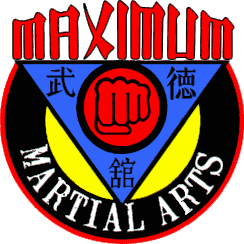The Learning Process of Martial Arts Technique can seem somewhat daunting, but should be learned with a fun, systematic approach. Learning how to best learn martial arts is a fundamental skill for all practitioners.
The first part of learning is understanding that consistent quality repetition beats overly zealous training and is the secret to mastery. Many students will start martial arts classes with the intent of learning and getting as good as they can as fast as they can. This leads to over training, by doing too much too soon, attempting to train hard, instead of training smart.
There has always been an intrinsic order to learning and developing technique, which is:
1. Form- Learning and consistently enforcing the correct form of all techniques is by far the most important part of learning. This requires patience, taking the time to focus on balance, correct alignment, learning to understand kinetic chaining, and will constantly evolve as your understanding of each technique gradually increases. Keeping your focus on learning correct form will exponentially increase your progression in learning, as beginning level techniques serve as building blocks for intermediate level techniques and intermediate level techniques for advanced level techniques. Correct form will also help you avoid injury and will also help you to efficiently add speed and power.
2. Speed- Once you start to understand and perform techniques with proper alignment, balance, and orders of movement you can now effectively add speed to your technique. This requires relaxation, an understanding of timing, launch points, distance judgement, and correct rhythm. Many times people think going fast is all you need to do to be fast. But, being able to keep proper timing with your opponent, knowing when and where to add speed, and at what rhythm are all integral parts to being fast, instead of just going fast. As you learn to add speed to your techniques, you should always reference your form. A fast paced technique with bad form, is just bad technique, and will not help you enforce good habits and correct muscle memory.
3. Power- Many people confuse muscling through technique as power, but this will prove to be counterproductive. The basic equation is Mass x Speed x Acceleration= Power. This requires you to maximize mass in your technique through proper form…maximizing speed through efficient movement based on form, and the understanding of rhythm and progressive speed. An intrinsic part of adding power to martial arts technique is learning when and what muscles groups to tense for brief moments, as opposed to just being stiff. Understanding agonist and antagonist muscle groups will help form more speed and efficient power.
Gradual and consistent conditioning is a major part of the learning process. Both mental and physical conditioning allow you to push your body further, faster, and harder over time. A consistent exercise regimen, goal setting, a positive outlook, and bringing new challenges to yourself are important to progressing. This DOES NOT MEAN over training! Remember that consistent quality repetition is the secret to mastery. This requires you to be able to train regularly, day after day, week after week, and so on for years. Making yourself too sore to train or injuring yourself will only hinder your training. Allow your body to get faster, stronger, and more flexible in a gradual progression. Rest, when you need to rest! This will ultimately help you on your road to mastery.
As you continue to learn, you will climb, seemingly peak and also plateau. If you do find yourself in a plateau, not finding a marked or notable improvement, the first thing you should do is go back to the basics refocusing on your form, as there may be some small pieces of the building blocks missing from your technique. Second, take a step back and allow yourself to think about the technique, while watching others perform theirs, including your instructors, seniors, and especially other students at the same levels. You may be able to pick out a mistake, they might be making, that you are also doing. With comparing and contrasting, you can figure out what works and what doesn’t.
Remember that technique should be initially learned with minimal to no resistance, with resistance gradually added by a partner. This will allow you to not only make your technique correctly effective, but will allow you to gradually increase your confidence. Giving your partner resistance and vice versa does not require animosity, but instead a friendly sense of competition and teamwork, helping each other to improve over time. Besting someone does not help you… making your team better, so you have consistent competition makes you better. Enjoy the learning process, while building a team minded framework. You will not only have a great time getting better and ultimately mastering your craft, but you will also make lifelong friends in the process.
DO IT AGAIN & AGAIN, DO IT BETTER, AND HAVE FUN!
